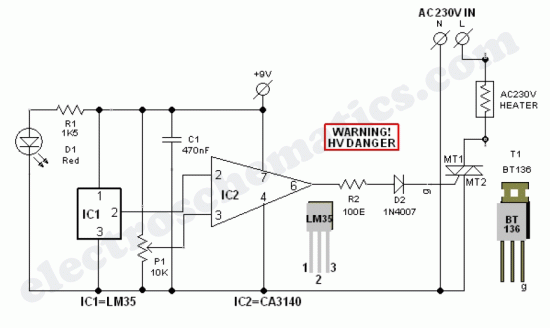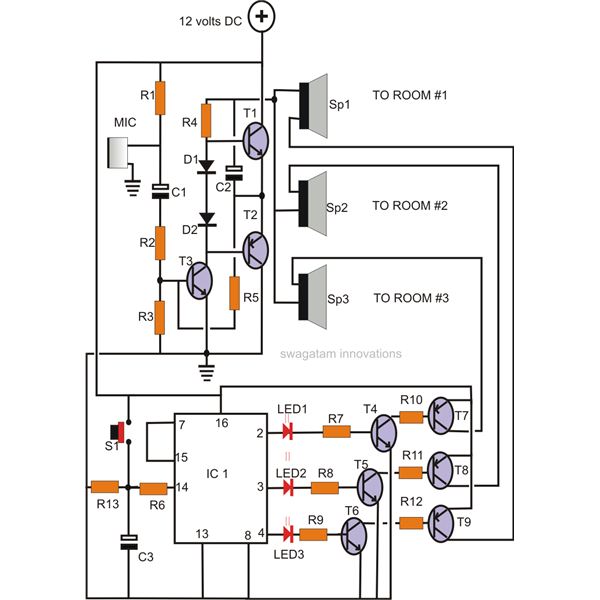
Audio distribution electronic project circuit diagram

This audio distribution electronic project circuit diagram is designed using the TL064 or TL06 operational amplifiers and some other common electronic parts.
The audio distribution circuit utilizes TL064 or TL06 operational amplifiers, which are quad op-amps known for their low noise and high performance. These components are ideal for audio applications due to their ability to amplify weak audio signals without introducing significant distortion or noise. The circuit typically includes a power supply section, input and output stages, and feedback networks to ensure stability and gain control.
The design may incorporate resistors and capacitors to set the gain of the operational amplifiers and to filter out unwanted frequencies. Input connections can be made for various audio sources, while output connections are designed to drive speakers or further processing stages. The layout should ensure minimal interference and optimal signal integrity, often achieved through careful routing of traces and placement of components.
For practical implementation, a PCB (Printed Circuit Board) can be designed to accommodate all components, ensuring a compact and reliable assembly. Proper grounding techniques should be employed to minimize noise and improve overall performance. Additionally, consideration should be given to the thermal management of the op-amps, as excessive heat can affect their operation.
Overall, this audio distribution circuit is suitable for applications in home theaters, public address systems, and musical performance setups, providing high-quality audio signal distribution with minimal loss and distortion.This audio distribution electronic project circuit diagram is designed using the TL064 or TL06 operational amplifiers and some other common electronic parts. 🔗 External reference
The audio distribution circuit utilizes TL064 or TL06 operational amplifiers, which are quad op-amps known for their low noise and high performance. These components are ideal for audio applications due to their ability to amplify weak audio signals without introducing significant distortion or noise. The circuit typically includes a power supply section, input and output stages, and feedback networks to ensure stability and gain control.
The design may incorporate resistors and capacitors to set the gain of the operational amplifiers and to filter out unwanted frequencies. Input connections can be made for various audio sources, while output connections are designed to drive speakers or further processing stages. The layout should ensure minimal interference and optimal signal integrity, often achieved through careful routing of traces and placement of components.
For practical implementation, a PCB (Printed Circuit Board) can be designed to accommodate all components, ensuring a compact and reliable assembly. Proper grounding techniques should be employed to minimize noise and improve overall performance. Additionally, consideration should be given to the thermal management of the op-amps, as excessive heat can affect their operation.
Overall, this audio distribution circuit is suitable for applications in home theaters, public address systems, and musical performance setups, providing high-quality audio signal distribution with minimal loss and distortion.This audio distribution electronic project circuit diagram is designed using the TL064 or TL06 operational amplifiers and some other common electronic parts. 🔗 External reference





